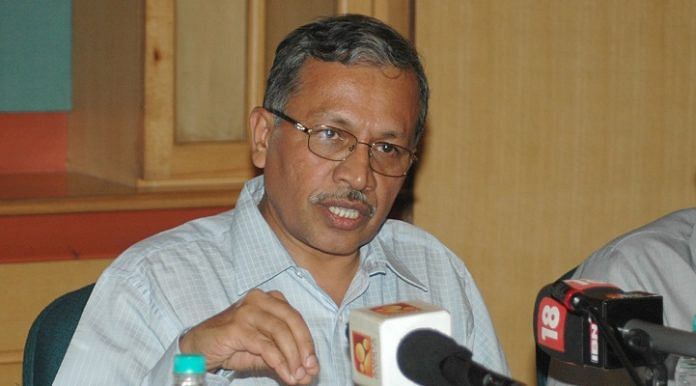Repeated loan waivers raise question if the move benefits farmers or banks as someone else ends up paying for the write-off, says former bureaucrat T. Nanda Kumar.
As farmers in more states join the growing clamour for loan waivers and the unrest in the farming community hits the headlines, the bureaucrat who presided over the massive farm loan waiver of Rs 60,000 crore by the UPA government in 2008 said that increasing farmers’ income is the solution and not writing off loans.
Repeated waivers only ruin the credit repayment culture among farmers and defeat the idea of the 2008 decision that it would be the last of its kind, T. Nanda Kumar, who was agriculture secretary from 2008 to 2010 before his retirement, told ThePrint in a telephone interview.
“When we designed this waiver, we were under the impression that this would be the last such write-off,” he said referring to the decision of then Prime Minister Manmohan Singh’s government.
“The concern actually is how to get farmers’ income up. Agriculture market reform is crucial…the distress today is also obvious. Farmers feel they do not get the price they deserve. The question is how do we get appropriate prices for farmers especially when the produce huge quantities of surpluses,” Kumar said.
“We have to look at surplus crop from a farm perspective and not national perspective. From the latter, surpluses are always good but not for farmers,” he said.
Distress in the farming sector on the back of two successive droughts and the unrest among farmers over their debt burden and low prices for their produce in several pockets across the country have been making news for several months now. There has also been a growing demand for farm loan waivers since it became a key issue during assembly elections to five states earlier this year.
While the new BJP government in Uttar Pradesh kept its election promise and announced a waiver amounting to Rs 36,000 crore soon after coming to power, Maharashtra followed suit this month with a Rs 30,500 crore write-off. Demands for waivers have also been made in Madhya Pradesh, Karnataka, Punjab, Haryana, Odisha, Rajasthan, Gujarat and Uttarakhand.
But Kumar said another loan waiver without any follow-up would not make any real difference. “It’s about getting farmers appropriate incomes. I read somewhere that some are in fact below MSP prices, which is unacceptable,” he said.
Talking about his experience of executing the Rs 60,000 crore loan waiver, Kumar said getting all records right, identifying what was being waived, was critical.
“A question that has always remained in my mind is whether we are helping banks or helping farmers. Whatever was waived off did go to the bank’s accounts, not the farmers but somebody else paid them,” he said. He also underlined the problem of a large number of data sets that had to be dealt with – from the quantity of land the farmers own to how much loan they took, among others.
“Another issue was about the norms for giving loans. Many banks were giving loans much beyond norms, which then weren’t showing up in statistics. Thus, over-lending was also a problem,” he said, while admitting that waivers do help farmers to an extent.
“To take care of the argument that with such waivers, farmers will develop a culture of not paying back, we even came up with the idea in 2009 that interest subvention will be given only in case of prompt repayment of loans. This was done precisely to address the concern that waiving loans would mean farmers will stop paying back. However, the entire argument falls flat if we are talking about another waiver,” Kumar stressed.
A study by Credit Suisse this week has found that the execution of such waivers can actually take several months. “Even in states where farm loan-waiver announcements have been made, execution, i.e. government paying banks, could take a few years. The 2008 waiver took 2.5 years from announcement to completion, and was 27 per cent smaller than announced,” the study said. “The reason is not just lack of fiscal space, but also complexity of execution.”



